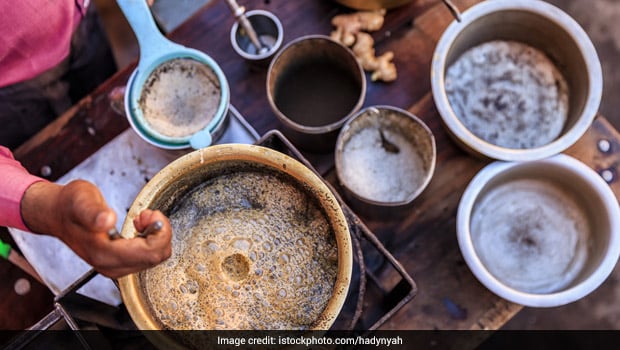While sitting at the Worli Sea Face right in the wee hours of the night, I could still hear the hustle and bustle of people and the zipping of cars on the road near. For that time of the night, there were quite a few people strolling along the sea enjoying the breezy air. Bright lights were buzzing and you could still hear faint music being played in some far distant corner. No wonder, they call Mumbai ‘the City that Never Sleeps’. As I sat there, I watched vendors selling the favourite street snacks like Bhel Puri and Chana Puri and some offering Mumbai’s quintessential 'cutting chai'. Tea makes for an important part of our daily lives. From bed tea to the evening cup of chai, it won’t be wrong to call us a nation of tea drinkers. What’s more interesting are the different varieties of teas that are available and the ways in which they are prepared and enjoyed across different regions. Given that, Aamchi Mumbai has a very different take on their usual cup of chai. They call it the ‘cutting chai’. Typically, a cutting chai in Mumbai is half a cup of tea, which is less in quantity and price but just enough to refresh your senses.Every Nukkad’s Cutting Chai
Cutting chai literally translates to 'cut into half' which means a small quantity of tea. Initially, cutting chai was only offered at ‘tapri’ or chai stalls, but now many modern cafes are also serving it along with accompaniments. Cutting chai is usually enjoyed with biscuits or Khari biscuits, bun maska, bhajiya pav or vada pav and you would find tea vendors at every nukkad in the city. The cutting chai is generally served in special small sized glasses. According to Mr. Sudhir Malhotra, Owner of Café Chai Bar, “People usually have a least 2-3 cups of tea in a day. Therefore, the concept of cutting chai came up; it was drinking a half cup so that you could drink many cups in a day and yet moderate the amount that you are drinking. We serve the chai with various snack options like crisp matthi, buttery naankhatai, the famousvada pavor the good old samosa.”
 Cutting chai literally translates to 'cut into half' which means a small quantity of teaWhat’s the Secret to Making a Cutting Chai?Mr. Sudhir shares, “Considering its small quantity, cutting chai should be flavourful and aromatic. It should have the perfect balance of spices, aroma and strength to make a person fall in love with it in just one sip. We blend different types of tea leaves to make one type and add flavours that include fresh ground elaichi, saunf, lemongrass or adrak.” Tea is brewed with tea leaves, ginger, cardamom or any other flavouring ingredient along with milk. It is boiled for a longer period of time, a minute or two extra to make it kadak (strong) and also infuse all the flavours.
Cutting chai literally translates to 'cut into half' which means a small quantity of teaWhat’s the Secret to Making a Cutting Chai?Mr. Sudhir shares, “Considering its small quantity, cutting chai should be flavourful and aromatic. It should have the perfect balance of spices, aroma and strength to make a person fall in love with it in just one sip. We blend different types of tea leaves to make one type and add flavours that include fresh ground elaichi, saunf, lemongrass or adrak.” Tea is brewed with tea leaves, ginger, cardamom or any other flavouring ingredient along with milk. It is boiled for a longer period of time, a minute or two extra to make it kadak (strong) and also infuse all the flavours.
 Considering its small quantity, cutting chai should be flavourful and aromaticSo, if you visit Mumbai anytime soon, do not forget to enjoy your cup of cutting chai. I am sure you’ll fall in love with it, just like I did.
Considering its small quantity, cutting chai should be flavourful and aromaticSo, if you visit Mumbai anytime soon, do not forget to enjoy your cup of cutting chai. I am sure you’ll fall in love with it, just like I did.
Cutting chai literally translates to 'cut into half' which means a small quantity of tea. Initially, cutting chai was only offered at ‘tapri’ or chai stalls, but now many modern cafes are also serving it along with accompaniments. Cutting chai is usually enjoyed with biscuits or Khari biscuits, bun maska, bhajiya pav or vada pav and you would find tea vendors at every nukkad in the city. The cutting chai is generally served in special small sized glasses. According to Mr. Sudhir Malhotra, Owner of Café Chai Bar, “People usually have a least 2-3 cups of tea in a day. Therefore, the concept of cutting chai came up; it was drinking a half cup so that you could drink many cups in a day and yet moderate the amount that you are drinking. We serve the chai with various snack options like crisp matthi, buttery naankhatai, the famousvada pavor the good old samosa.”


Advertisement








